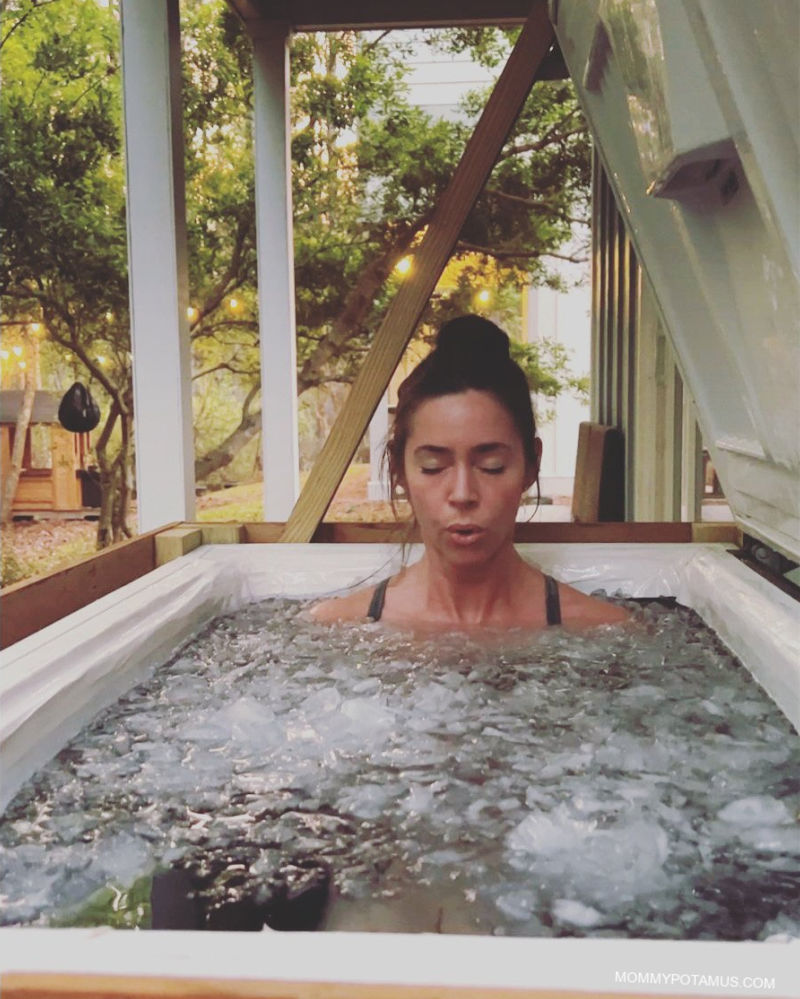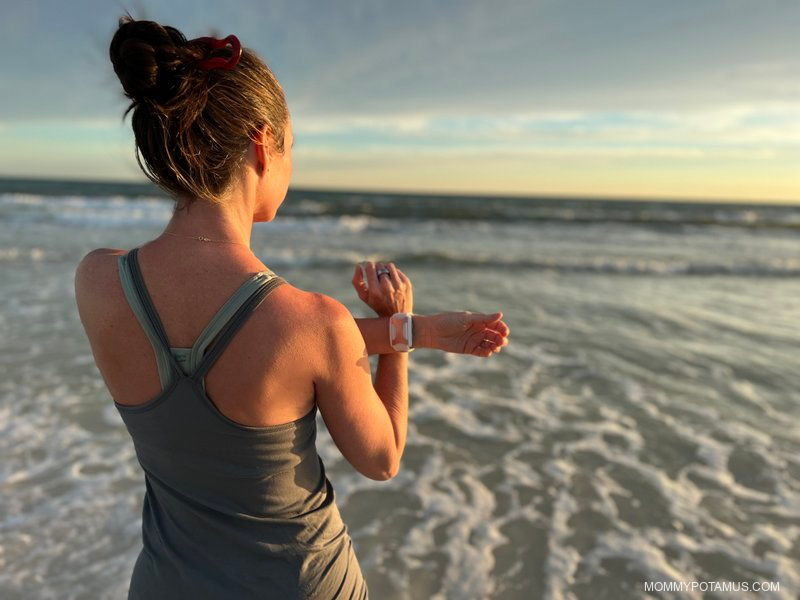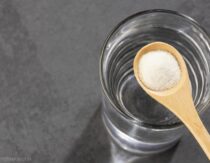
Tracking your heart rate variability (HRV) can offer valuable insights into your overall stress resilience, whether a specific wellness practice truly activates your “rest and repair” mode, and how different lifestyle choices impact your overall well-being. It’s far more than a passive metric, though – you can actually improve it!
That’s a good thing, because higher HRV scores are associated with better physical and emotional health. (1) Now, if you’re not sure what heart rate variability is, why it matters or how to track it, click here for a beginner’s guide that will bring you up to speed.
If you’re already familiar with HRV, below are some research-backed ways to nudge your score toward what’s optimal for you. As always, none of these statements have been evaluated by the FDA, this article is not medical advice, and it’s not meant to diagnose or treat any condition. Now let’s dive in.
#1 – Daily Physical Activity
Getting regular exercise 2-3 times per week is one of the most reliable and effective ways to raise your baseline HRV. (2) The benefits are not restricted to just one type of exercise either – consistent aerobic exercise, strength training, and practices like yoga have all been shown to result in higher HRV scores. (3) (4) (5)
“Wait,” you might be thinking, “in your previous article you say that moderate exercise can lower HRV.” That’s true, so here’s what you need to know:
During moderate to high intensity workouts, you want your sympathetic nervous system to temporarily “mute” the influence of the parasympathetic system so that it can properly elevate your heart rate and deliver oxygen to your muscles. That means that during the workout your HRV would be low (dominated by one side), which is a beneficial adaptive response.
However, when you exercise consistently over time your resting heart rate will decrease as your heart becomes more efficient. When there’s more time between each heartbeat, there’s an increased opportunity for the slight variations in rhythm that contribute to high HRV. In other words, consistent moderate exercise lowers HRV during the workout but tends to raise it over time by increasing cardiac efficiency.
One thing to keep in mind, though, is that HRV should return to normal pretty soon after exercise. If HRV stays low after workouts and/or you’re feeling exhausted most of the time, it may be an indication of overtraining. (6) In that case, it may be helpful to balance workouts with more recovery time.
#2 – Daily Breath Work
Confession: After so many years of being in constant motion (hello motherhood), the stillness of breath work used to really freak me out. So, even though I’d heard all about the benefits, I resisted incorporating it into my wellness practice for a long time.
It wasn’t until I hit some rough patches in my healing journey that I decided to give it a real shot, and now my only regret is that I didn’t incorporate it sooner. When I finally committed, I noticed that my score started stabilizing from day-to-day instead of ricocheting all over the place. (Note: I’m not recommending breath work as a “treatment” for anything. I’m just saying that I found it helpful in supporting my autonomic nervous system balance during a very challenging time.)
According to this study, just six minutes of deep breathing per day is enough to make a difference in HRV. Several breathing techniques/patterns were tested, and the best results were noted when participants inhaled for four seconds, held for two, and then exhaled for four. They think it was because it was the easiest pattern to follow of those that were tried.
Personally, I don’t use a pattern. I use this Heartmath EmWave2 instead, which was given to me by a functional medicine neurologist. It’s basically a “breathwork for dummies” tool that uses a sensor to help you stay in your target zone. It has a light that turns green when you’re in a good flow, blue when you’re in-and-out, and red when you get distracted and lose track.
I use mine pretty much every single day. Sometimes it’s a focused session, usually outside while resting in the warm sun. On busier days, though, I use it at night while I’m watching a show. I don’t stare at the indicator light – I just focus on slow, even breaths and glance at the device every once in awhile to make sure the green light is on.
If you invest in one, I recommend getting the extra sensor that fits over your finger. For me, it’s much more relaxing than using the sensor it comes with.

#3 – Prioritize Deep, Restorative Sleep
HRV operates on a circadian rhythm, and it’s highest at night when we’re sleeping. (7) It’s probably not a surprise, then, that sleep deprivation and/or lower sleep quality is associated with lower HRV. (8)
On the flipside, deep, restorative sleep leads to a higher overall HRV. Here are some tips for improving sleep quality.
Also, raising HRV levels during the waking hours increases sleep efficiency, which is the amount of time in bed actually sleeping (versus just trying to sleep). (9) In other words, working to raise HRV during daytime hours may improve your quality of sleep at night, which can turn around and support higher HRV the next day.
# 4 – Eat A Healthy Diet & Avoid Late Night Snacking
In studies, consuming nutrient-dense foods like omega-3 rich fatty fish and leafy greens increased heart rate variability. (10) Specifically, certain micronutrients – particularly vitamin D and vitamin B-12 – are associated with higher HRV. (11)
On the other hand, eating foods containing trans fats has been shown to lower HRV. (12)

#5 – Incorporate Adaptogenic Herbs
Since HRV is an indirect measure of stress resilience, and adaptogenic herbs increase our resilience to stress, it’s not a stretch to think that they might positively impact HRV scores. Although little research has been done, this study using Rhodiola rosea (pictured above) found exactly what you’d guess – the golden root increased HRV over time.
Click here to learn how to use rhodiola, and click here to learn more about other adaptogens worth considering.
#6 – Hydrate
Dehydration negatively affects HRV, so make sure to drink plenty of purified water. (13)
One thing to keep in mind, though, is that hydration isn’t just about H20. We need ion-rich minerals called electrolytes – particularly sodium, chloride, magnesium and potassium – to facilitate “rapid fluid absorption and maintenance of body fluid.” (1) In other words, electrolytes help balance the amount of water in your body while also:
- Helping to manage your body’s acid/base (pH) level
- Moving nutrients into your cells
- Moving waste out of your cells
- Supporting the function of your nerves, muscles, heart, and brain (14)
We get electrolytes through our food, but in times of intense physical exercise or heat (causing sweating and loss of minerals) or illness (making it difficult to keep food down), extra minerals and/or homemade electrolyte drinks can be helpful for supporting rehydration. (15)
I sweat a lot due to near daily sauna sessions, so I add 1/2-1 teaspoon of this liquid trace mineral supplement to a large mason jar of water every morning to sip on throughout my day.

#7 – Try Cold Thermogenesis
Weird as it may sound, sometimes the antidote to stress is . . . more stress. Specifically, we’re talking about hormetic stress, which is the beneficial kind that helps tone our vagus nerve – a vital part of our parasympathetic nervous system. (16)
Research shows that cold stimulation increases heart rate variability by activating our vagus nerve. (17) Cold showers are a very affordable way to incorporate this therapy. Ice baths are another great option. I’ve loathed being cold pretty much my entire life, but I started plunging in ice water last year and have really grown to love it.
I bought my setup from a local guy who built it, but there are several good pre-made cold plunge setups available, too. Here’s one, and here’s another one.

#8 – Forest Bathe
It’s no secret that many trees have beneficial – sometimes even medicinal – properties, but what if the forests themselves are actually therapeutic, too? That’s the idea behind the practice of forest bathing – or shinrin-yoku in Japanese – and research indicates that it’s true.
It’s associated with:
- Increased heart rate variability (18)
- Reduced blood pressure
- Lower stress levels
- Improved cardiovascular and respiratory health
- Lower blood sugar levels
- Improved concentration and memory
- Mood lift
- Improved energy
- Better sleep
- Better immune function due to an increase in natural killer (NK) cells
Click here for more info on the benefits of forest bathing, plus how to get started.
#9 -Snuggle Under A Weighted Blanket
Weighted blankets help with sleep, reduce stress, improve daytime focus and mood, and ease symptoms associated with sensory processing disorder and other concerns. Plus, in this study, surgery patients that used them had higher HRV scores than those who didn’t.
Here’s how they work, plus tips for choosing the right one for you.
#10 – Focus On Strengthening Emotional Bonds
Feeling supported within our community increases our HRV, so let’s offer – and ask for – empathy and practical help when it’s needed. (19) This can look very different based on each set of unique circumstances – it might be offering to just sit and listening, suggesting a change of scenery (maybe taking a walk while chatting), or something completely different.
#11 – Keep A Gratitude Journal
Happiness researchers – yes, real academic researchers, neuroscientists and even economists – are now intensely studying what makes us happy, how to increase happiness, and how to live the good life. Near the top of that list is practicing gratitude, and one of the best ways to cultivate thankfulness is to keep a gratitude journal.
In this study, gratitude journaling significantly increased HRV and lowered inflammatory biomarkers. Here are more benefits, plus tips for getting started.

#12 – Apollo Neuro
Unlike the Oura ring and other HRV monitors, the Apollo Neuro is not a biometric tracking device. It’s actually a therapeutic wearable developed by neuroscientist and psychiatrist Dr. David Rabin MD, PhD. The technology originates from his research at the University of Pittsburgh and decades of scientific research into vibration frequencies and how they impact the body.
It’s designed to be worn discreetly on the wrist or ankle and works by sending gentle vibrations to your body that signal safety to your brain. Seven clinical trials have found it to be helpful for improving a variety of metrics, including HRV, sleep, focus, and recovery, and there are fourteen more clinical trials currently underway. I’ve written about my experience with the Apollo Neuro here, and you can see all the studies that have been completed or are in progress here.
To try out the Apollo Neuro, click here and use code MP10 to save 10%
Do you have a question about heart rate variability? Let me know the comment section below!

Sources
- Adrian L Lopresti (2020) Association between Micronutrients and Heart Rate Variability: A Review of Human Studies
- Faye S Routledge, PhD RN et. al. (2010) Improvements in heart rate variability with exercise therapy
- Jatuporn Phoemsapthawee et. al. (2019) Heart rate variability responses to a combined exercise training program: correlation with adiposity and cardiorespiratory fitness changes in obese young men
- Marian E Papp et. al. (2013) Increased heart rate variability but no effect on blood pressure from 8 weeks of hatha yoga – a pilot study
- AV Vinay et. al. (2015) Impact of short-term practice of yoga on heart rate variability
- Alireza Rabbani et. al. (2019) Match Fatigue Time-Course Assessment Over Four Days: Usefulness of the Hooper Index and Heart Rate Variability in Professional Soccer Players
- Juha T. Korpelainen et. al. (1997) Circadian Rhythm of Heart Rate Variability Is Reversibly Abolished in Ischemic Stroke
- Kai Spiegelhalder et. al. (2011) Heart rate and heart rate variability in subjectively reported insomnia
- J. Gouin et. al. (2013) Heart rate variability predicts sleep efficiency
- Sung Kyun Park et. al. (2009) Fruit, vegetable, and fish consumption and heart rate variability: the Veterans Administration Normative Aging Study
- Adrian L Lopresti (2020) Association between Micronutrients and Heart Rate Variability: A Review of Human Studies
- Dariush Mozaffarian et.al. (2008) Dietary Fish and ω-3 Fatty Acid Consumption and Heart Rate Variability in US Adults
- Hayley A. Young et. al. (2019) Autonomic adaptations mediate the effect of hydration on brain functioning and mood: Evidence from two randomized controlled trials
- MedLine Plus. Fluid and Electrolyte Balance
- Maughan, R.J. (2007) Fluid and electrolyte loss and replacement in exercise
- Sigrid Breit et. al. (2018) Vagus Nerve as Modulator of the Brain–Gut Axis in Psychiatric and Inflammatory Disorders
- Manuela Jungmann et. al. (2018) Effects of Cold Stimulation on Cardiac-Vagal Activation in Healthy Participants: Randomized Controlled Trial
- J Lee et. al. (2011) Effect of forest bathing on physiological and psychological responses in young Japanese male subjects
- Elisabet Kvadsheim et. al. (2022) Vagally mediated heart rate variability, stress, and perceived social support: a focus on sex differences




